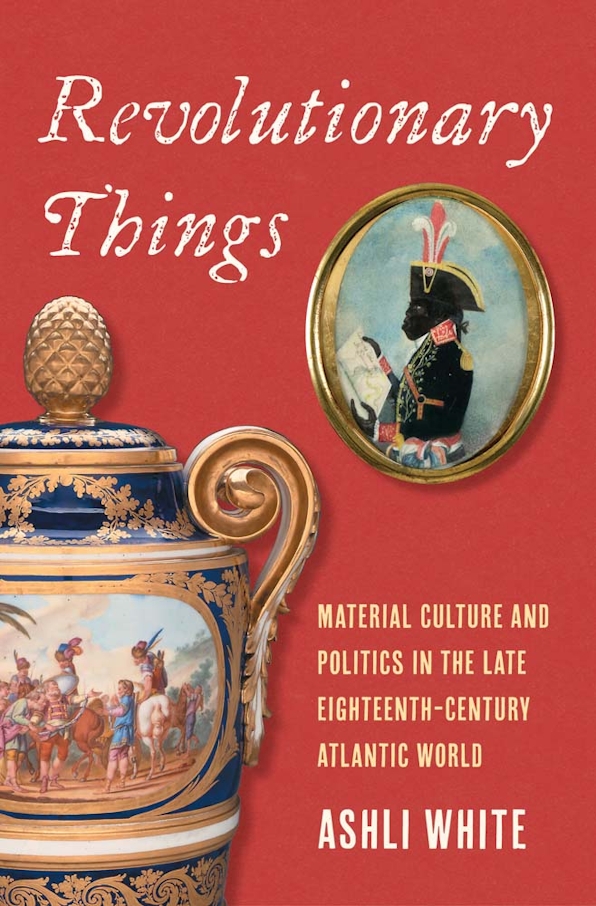Black Reviews White’s Revolutionary Things
H-Early-America has just shared Jennifer M. Black’s review of Ashli White’s new book, Revolutionary Things: Material Culture and Politics in the Late Eighteenth-Century Atlantic World.
White looks at “the material culture that shaped French, American, and Haitian political contests between 1770 and 1810,” covering “diverse objects such as military clothing, maps, ceramics, wax figures, and politically charged accessories.”
Black writes:
White looks at “the material culture that shaped French, American, and Haitian political contests between 1770 and 1810,” covering “diverse objects such as military clothing, maps, ceramics, wax figures, and politically charged accessories.”
Black writes:
Part 1 examines everyday items that became politically charged due to who procured them, where, how, and why. . . .The review sums up:
Part 2 examines clothing and accessories to show how revolutionary individuals understood, demonstrated, and interpreted their own political alignments and those of others. . . .
Part 3 turns to visual culture, especially maps, prints, and wax figures, to understand how contemporaries shared news about the ongoing revolutions.
In her focus on the objects’ production, distribution, use, and context, White departs from typical material culture histories of this period, which tend to focus on how certain objects conveyed status or represented cultural and intellectual themes for contemporaries. In this way, White provides a fresh and interesting discussion of these highly politicized objects. But the approach may be somewhat frustrating for material culture scholars accustomed to close readings of particular objects’ attributes and symbolism—there are few of these, and mostly toward the end of the book. . . .Some of the most knowledgable and diligent researchers into Revolutionary-era material culture I know are reenactors since they literally use the objects of the time or the closest replicas they can make or obtain. It sounds like this book might be useful for exploring the cultural context of those goods and how that changed with events.
Still, this book makes several important contributions to the extant literature. White’s transnational and comparative focus allows her to isolate racial difference as a factor that shaped individual experience and, for example, affected contemporaries’ reactions to revolutionary violence. . . . Moreover, White’s transnational focus allows her to trace objects that moved across the Atlantic and circulated among varied revolutionaries. Thus, the book is as much a history of material culture in the military as it is about politics and revolutions.


No comments:
Post a Comment